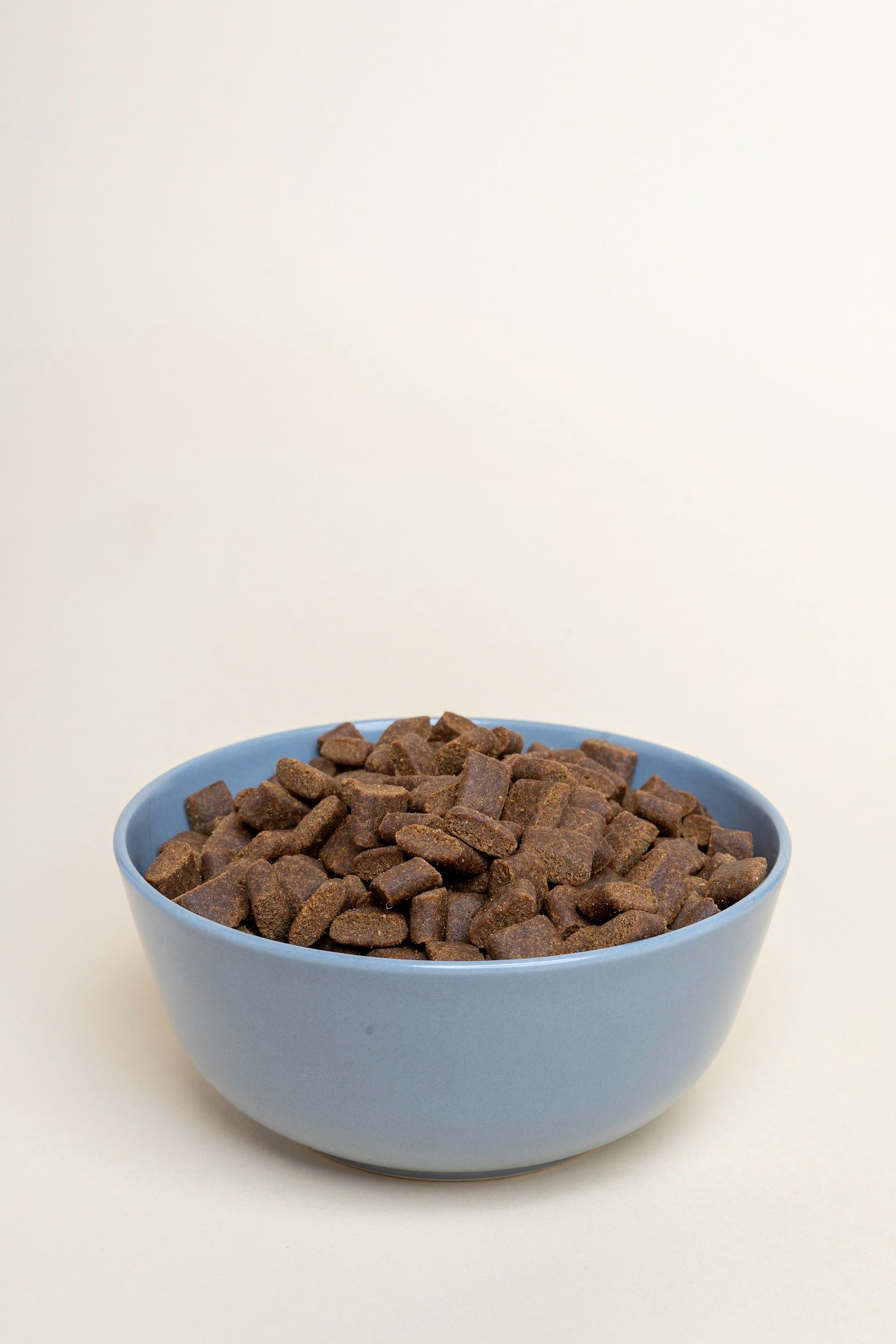In 2019, a premium dog food brand got slapped with a lawsuit for calling their product "human grade" when it contained ingredients processed in facilities that would never pass USDA inspection for human consumption. The company settled quietly, changed their packaging, and moved on.
The customers who'd been paying $4.50 per pound? They had no idea they'd been buying marketing copy instead of actual quality standards.
Dog food labels are a masterclass in strategic ambiguity. Words like "holistic," "natural," and "premium" sound meaningful but are essentially unregulated marketing fluff. Meanwhile, the terms that actually matter — the ones with legal definitions — are buried in fine print that nobody reads.
Let's decode the bullshit.
"Holistic": The word that means nothing
The term "holistic" has no legal definition and isn't regulated by the FDA, AAFCO, or the USDA. It's pure marketing. A company can slap "holistic" on a bag of food without meeting any specific standards whatsoever.
For dog food, holistic is often used as a marketing term as it has no accepted specific relation to ingredients used in a product. Translation: it means whatever the brand wants it to mean, which is usually "we want you to pay more."
That $75 bag of "holistic" kibble might be nutritionally identical to the $35 bag next to it. You're paying for vibes.
"Natural": Slightly less meaningless
At least "natural" has some guardrails. To be labeled "natural," pet food must be made without added artificial colors, flavors or preservatives, and ingredients can come only from plants, animals, or naturally occurring minerals.
But here's the catch: "natural" doesn't mean organic, doesn't guarantee quality, and doesn't exclude byproducts or fillers. It just means they didn't dump red dye #40 into the mix.
A bag of "natural" dog food can still contain corn gluten meal, chicken byproducts, and ingredients from factory farms. As long as those ingredients weren't chemically synthesized, it's technically natural.

"Human-grade": Now we're talking
This one actually matters — or at least, it does now. AAFCO has published new guidelines for human grade dog food, and for pet food to be called human grade, documentation must cover every ingredient used.
That means every single ingredient must be produced, handled, and stored in facilities that meet USDA standards for human food. The chicken, the sweet potatoes, the blueberries — all of it has to be fit for you to eat.
This is legitimately harder to achieve and genuinely more expensive to produce. If you see "human-grade" on a label (and the company isn't getting sued), you're actually getting something different.
"Grain-free": The trend that backfired
Remember when grain-free was supposed to solve all of our dogs' problems? Plot twist: it might have created new ones.
The FDA has been investigating hundreds of reports linking grain-free diets — particularly those heavy in peas, lentils, and potatoes — to dilated cardiomyopathy (DCM), a serious heart condition in dogs. The investigation is ongoing, but the correlation is concerning enough that many veterinarians now actively discourage grain-free diets unless medically necessary.
Here's the irony: grains were never the enemy. Most dogs aren't allergic to grains. The grain-free boom was a solution to a problem that didn't exist for the vast majority of dogs.
The fine print that actually matters
Want to know if a dog food is any good? Ignore the marketing text on the front and look for these:
The AAFCO statement: This tells you whether the food meets nutritional standards. AAFCO doesn't regulate, test, approve or certify pet food, but it establishes model language that states and other governing bodies may adopt into law. Look for phrases like "complete and balanced nutrition for [life stage]."
The ingredient list: Ingredients are listed by weight. If you see "Chicken, Ground Corn, Corn Gluten Meal, Corn Bran," that's a red flag — they're splitting corn into multiple ingredients to make it look like there's less of it.
The guaranteed analysis: This tells you minimum protein and fat percentages, maximum fiber and moisture. But be careful: canned food will show lower protein percentages because of water content. You need to calculate dry matter basis to compare properly.
"With" vs. named ingredients: If the bag says "Dog Food with Beef," it only needs to contain 3% beef. If it says "Beef Dog Food," it needs at least 25% beef (or 10% if it says "dinner," "platter," or "entrée").
What you should actually care about
Stop worrying about buzzwords. Start asking:
Does this food have an AAFCO statement for my dog's life stage? Are the first few ingredients recognizable protein sources? Does my dog do well on it — good energy, healthy coat, solid poops?
That's it. That's the list.
The $90 bag of "holistic, grain-free, human-grade, limited ingredient" food might be great. Or it might be overpriced marketing with the same nutritional profile as the $40 bag of regular kibble that your dog thrives on.
The best dog food isn't the one with the most buzzwords on the label. It's the one that meets AAFCO standards, fits your budget, and keeps your specific dog healthy and happy.
Everything else is just expensive packaging.

